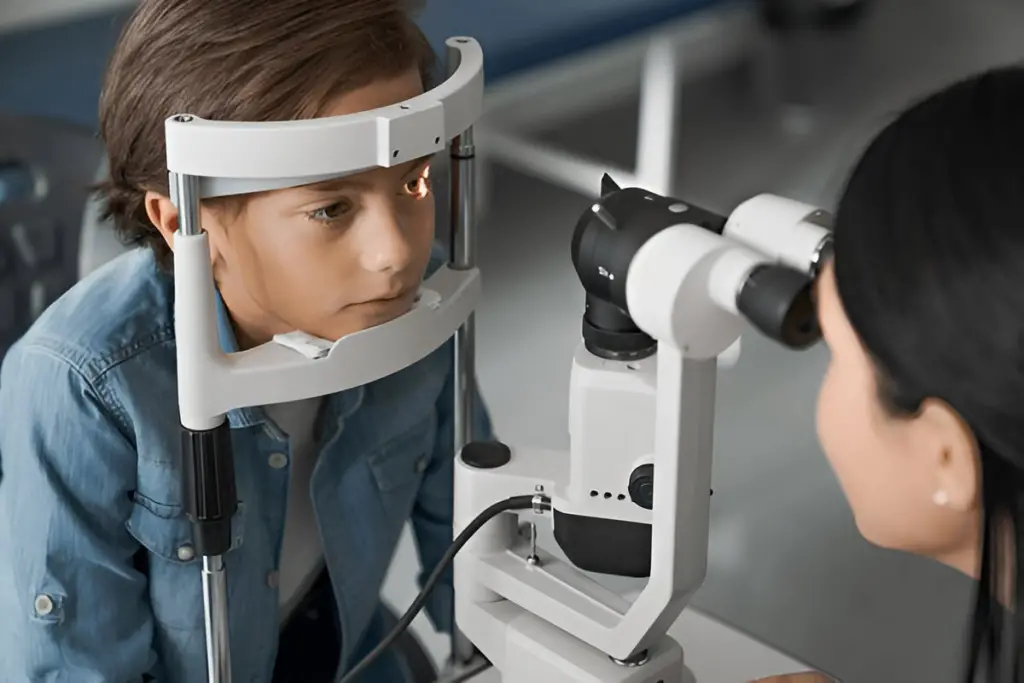Medicaid expansion explained simply means more healthcare coverage for you. Over 78 million Americans are enrolled in Medicaid in 2025-2026. You might qualify for free or low-cost healthcare if you earn up to $21,597 yearly. Your children with special needs also receive additional benefits.
Medicaid benefits for children with autism spectrum disorder include therapy coverage. How does EPSDT work for special needs Medicaid become essential for your family? School-based Medicaid services for special needs kids provide additional support. Eligibility for Medicaid special needs children opens doors to crucial care.
Medicaid therapy coverage for kids with disabilities ensures proper treatment. You will learn about state-by-state eligibility pathways, EPSDT deep-dive benefits, therapy coverage explained clearly, and school-based services. Visit Medicaid.gov for official enrollment information.
Table of Contents
What Is Medicaid Expansion?

Medicaid expansion explained starts with understanding your coverage options. The Affordable Care Act changed healthcare access for millions of Americans. Before 2014, many working adults fell through coverage gaps.
Traditional Medicaid only covered specific groups like pregnant women and children. Working adults without children rarely qualified for coverage. Your income might have been too high for Medicaid but too low for marketplace subsidies.
The Coverage Gap Before Expansion
Your coverage options were limited before Medicaid expansion in 2025-2026. Adults earning between $6,612 and $15,060 annually often had no affordable options. You faced choosing between healthcare and other basic needs.
Emergency rooms became your primary healthcare option. You received care but faced overwhelming medical bills afterward. Your financial stability suffered from unexpected healthcare costs.
How The Affordable Care Act Changed Everything
The Affordable Care Act expanded Medicaid to adults earning up to 138% of the Federal Poverty Level. You can now qualify if your household income is $21,597 or less in 2025-2026. The federal government pays the expansion costs to participating states.
Your state receives enhanced Federal Medical Assistance Percentage (FMAP) funding. The federal match rate makes expansion financially attractive for states. You benefit from increased healthcare access and financial protection.
Current State Of Medicaid Expansion: Where Does Your State Stand?

Your healthcare options depend greatly on where you live in 2025-2026. Currently, 40 states plus Washington, D.C. have adopted Medicaid expansion. Your coverage varies dramatically between expansion and non-expansion states.
The status of state Medicaid expansion decisions changes as political landscapes shift. Some states continue to debate expansion, while others maintain opposition.
Expansion States vs. Non-Expansion States
| Expansion Status | Number of States | Your Coverage Options |
| Expanded Medicaid | 40 + DC | Full coverage up to 138% FPL |
| Not Expanded | 10 states | Limited traditional Medicaid only |
The 10 non-expansion states include Alabama, Florida, Georgia, Kansas, Mississippi, North Carolina, South Carolina, Tennessee, Texas, Wisconsin, and Wyoming. Your options remain limited if you live in these states.
Recent 2025-2026 Policy Developments
Several states continue considering expansion through ballot initiatives and legislative action. Your state might change its expansion status during 2025-2026. Political changes often influence expansion decisions at the state level.
Some states have implemented trigger laws that automatically expand Medicaid under certain conditions. Your coverage could begin automatically if federal funding reaches specific thresholds. Monitor your state’s Medicaid program updates regularly.
How Medicaid Expansion Impacts Families With Special Needs Children

Medicaid expansion significantly improves healthcare access for children with special needs. Your family benefits from comprehensive coverage that extends beyond traditional services. Medicaid expansion explained includes enhanced support for developmental disabilities and behavioral health.
Children under 21 receive Early and Periodic Screening, Diagnosis, and Treatment (EPSDT) benefits. The program provides unlimited access to medically necessary services.
Medicaid Benefits For Children With Autism Spectrum Disorder
Your child with autism spectrum disorder receives comprehensive therapy coverage. Applied Behavior Analysis (ABA) therapy is covered when medically necessary. Your family can access speech therapy, occupational therapy, and behavioral interventions.
Medicaid covers diagnostic evaluations and ongoing assessments for your child. You receive support for adaptive equipment and communication devices. Your child’s treatment team can include multiple specialists working together.
Covered Services Include:
- Applied Behavior Analysis (ABA) therapy sessions
- Speech and language therapy services
- Occupational therapy for daily living skills
- Physical therapy for motor development
- Behavioral health counseling and support.
How Does EPSDT Work For Special Needs Medicaid?
Early and Periodic Screening, Diagnostic, and Treatment (EPSDT) provides comprehensive health services for children under 21 enrolled in Medicaid. Your child receives preventive care, diagnostic services, and treatment services. The program ensures early identification and intervention for health conditions.
Your child’s Early and Periodic Screening, Diagnostic, and Treatment (EPSDT)benefits include an unlimited scope of medically necessary services. You can access any service covered under your state’s Medicaid program. Your child receives priority access to specialized care and equipment.
Early and Periodic Screening, Diagnostic, and Treatment (EPSDT) requirements mandate that states provide comprehensive care coordination. Your child’s healthcare team works together to ensure seamless service delivery. You receive support navigating complex healthcare systems and accessing services.
Medicaid Therapy Coverage For Kids With Disabilities
Your child with disabilities receives extensive therapy coverage through Medicaid. Physical therapy, occupational therapy, and speech therapy are fully covered by insurance. You access these services without copayments or deductibles in most cases.
Medicaid covers the durable medical equipment your child needs for daily functioning. Wheelchairs, communication devices, and adaptive technology receive full coverage. Your child’s independence and quality of life improve significantly.
Transportation assistance helps you access therapy appointments across your community. Your family receives support getting to medical appointments and therapy sessions. Some states provide non-emergency medical transportation specifically for children’s services.
School-Based Medicaid Services: Your Hidden Benefit For Special Needs Kids

School-based Medicaid services provide additional support for your special needs child. Your local school district can bill Medicaid for eligible services provided during school hours. You receive enhanced support at no extra cost to your family.
Many families are unaware that school-based Medicaid services exist in their communities. Your child can receive therapy, nursing, and counseling services at school. These services complement your child’s Individualized Education Program (IEP) goals.
Understanding School-Based Medicaid Programs
Your school district partners with Medicaid to provide covered services. Speech therapy, physical therapy, and occupational therapy are standard school-based services. Your child receives these services as part of their educational program.
School nurses provide medication administration and health monitoring for your child. Behavioral health counseling helps your child succeed academically and socially. Your child’s educational team coordinates with healthcare providers for optimal outcomes.
Common School-Based Services:
- Speech and language therapy during school hours
- Physical therapy for mobility and motor skills
- Occupational therapy for classroom participation
- School nursing services and medication management
- Behavioral health counseling and crisis intervention
Eligibility For Medicaid Special Needs Children In School Settings
Your child must be enrolled in both Medicaid and receive special education services. The services must be included in your child’s IEP or 504 plan. Your school district handles the billing process with Medicaid programs.
You need to provide consent for your school to bill Medicaid services. Your child’s privacy is protected throughout the billing and service delivery process. The services your child receives don’t affect your family’s Medicaid benefits.
Documentation requirements ensure your child receives appropriate services at school. Your child’s healthcare providers and educational team collaborate on treatment goals. Progress monitoring helps ensure your child receives maximum benefit from services.
Early and Periodic Screening, Diagnostic, and Treatment (EPSDT): Your Complete Guide To Children’s Benefits

The Early and Periodic Screening, Diagnostic, and Treatment (EPSDT) program serves over 37 million children enrolled in Medicaid nationwide in 2025-2026. Your child receives comprehensive preventive and treatment services through this program. Early and Periodic Screening, Diagnostic, and Treatment (EPSDT) represents a cornerstone of pediatric healthcare coverage.
Your child’s Early and Periodic Screening, Diagnostic, and Treatment (EPSDT) benefits go far beyond routine medical care. The program provides unlimited access to medically necessary services and treatments. Your family receives support for complex medical conditions and developmental delays.
Comprehensive Screening And Prevention Services
Your child receives regular well-child visits and developmental screenings. Vision, hearing, and dental screenings identify problems early in development. Your child’s growth and development are monitored continuously through Early and Periodic Screening, Diagnostic, and Treatment (EPSDT).
Immunizations and preventive care keep your child healthy throughout childhood. Mental health screenings identify behavioral and emotional concerns early. Your child receives appropriate interventions before problems become severe.
Unlimited Treatment Coverage
Early and Periodic Screening, Diagnostic, and Treatment (EPSDT) provides any medically necessary service covered under your state’s Medicaid program. Your child can receive treatments that aren’t typically covered for adults. The program prioritizes your child’s long-term health and development outcomes.
Specialist consultations, advanced diagnostics, and innovative treatments are available when medically necessary. Your child’s healthcare team can recommend any appropriate intervention or service. You don’t face coverage limitations that might apply to adult services.
Therapy Coverage Explained: Maximizing Your Child’s Benefits

Medicaid therapy coverage for kids with disabilities includes comprehensive rehabilitation services. Your child receives physical therapy, occupational therapy, and speech-language therapy coverage. These services support your child’s development and independence throughout childhood.
Your child’s therapy needs are assessed regularly to ensure appropriate service levels. Treatment plans are individualized based on your child’s specific goals and challenges. You receive support in coordinating multiple therapy services to achieve optimal outcomes.
Physical Therapy Benefits
Your child receives physical therapy to improve mobility, strength, and motor skills. Therapists work on balance, coordination, and movement patterns with your child. Your child’s physical development is supported through evidence-based interventions.
Equipment and adaptive devices are covered when prescribed by physical therapists. Your child can receive wheelchairs, walkers, and mobility aids through Medicaid coverage. Home modifications may be covered to support your child’s independence and autonomy.
Occupational Therapy Support
Your child’s occupational therapy focuses on daily living skills and independence. Therapists help your child develop skills for eating, dressing, and self-care. Your child’s participation in school and community activities improves significantly.
Sensory integration therapy helps children with processing difficulties participate fully in activities. Your child receives support for handwriting, fine motor skills, and cognitive development. Adaptive equipment enhances your child’s ability to participate in daily activities.
Speech-Language Therapy Services
Your child receives speech-language therapy for communication and swallowing disorders. Therapists address articulation, language development, and social communication skills. Your child’s ability to communicate effectively improves through targeted interventions.
Alternative communication methods are explored when traditional speech isn’t sufficient. Your child can receive communication devices and assistive technology through Medicaid coverage. Family training ensures you can support your child’s communication development at home.
State-By-State Eligibility Pathways: Your Coverage Options

Your Medicaid eligibility depends significantly on your state’s decision to expand coverage. Each state maintains its own application process and eligibility determination system. You can check your eligibility through your state’s Medicaid website or Healthcare.gov.
Expansion states provide coverage for adults earning up to 138% of the Federal Poverty Level. Non-expansion states maintain traditional eligibility categories, but with significantly lower income limits. Your coverage options vary dramatically based on your state’s decisions.
Based on systematic verification from each state’s official government sources:
| State | Expansion Status | Adult Income Limit (Individual) |
| Alabama | Not Expanded | 18% FPL ($2,588) |
| Alaska | Expanded | 138% FPL ($21,597) |
| Arizona | Expanded | 138% FPL ($21,597) |
| Arkansas | Expanded | 138% FPL ($21,597) |
| California | Expanded | 138% FPL ($21,597) |
| Colorado | Expanded | 138% FPL ($21,597) |
| Connecticut | Expanded | 138% FPL ($21,597) |
| Delaware | Expanded | 138% FPL ($21,597) |
| District of Columbia | Expanded | 138% FPL ($21,597) |
| Florida | Not Expanded | 32% FPL ($4,607) |
| Georgia | Not Expanded | 35% FPL ($5,036) |
| Hawaii | Expanded | 138% FPL ($21,597) |
| Idaho | Expanded | 138% FPL ($21,597) |
| Illinois | Expanded | 138% FPL ($21,597) |
| Indiana | Expanded | 138% FPL ($21,597) |
| Iowa | Expanded | 138% FPL ($21,597) |
| Kansas | Not Expanded | 38% FPL ($5,465) |
| Kentucky | Expanded | 138% FPL ($21,597) |
| Louisiana | Expanded | 138% FPL ($21,597) |
| Maine | Expanded | 138% FPL ($21,597) |
| Maryland | Expanded | 138% FPL ($21,597) |
| Massachusetts | Expanded | 138% FPL ($21,597) |
| Michigan | Expanded | 138% FPL ($21,597) |
| Minnesota | Expanded | 138% FPL ($21,597) |
| Mississippi | Not Expanded | 27% FPL ($3,887) |
| Missouri | Expanded | 138% FPL ($21,597) |
| Montana | Expanded | 138% FPL ($21,597) |
| Nebraska | Expanded | 138% FPL ($21,597) |
| Nevada | Expanded | 138% FPL ($21,597) |
| New Hampshire | Expanded | 138% FPL ($21,597) |
| New Jersey | Expanded | 138% FPL ($21,597) |
| New Mexico | Expanded | 138% FPL ($21,597) |
| New York | Expanded | 138% FPL ($21,597) |
| North Carolina | Not Expanded | 43% FPL ($6,188) |
| North Dakota | Expanded | 138% FPL ($21,597) |
| Ohio | Expanded | 138% FPL ($21,597) |
| Oklahoma | Expanded | 138% FPL ($21,597) |
| Oregon | Expanded | 138% FPL ($21,597) |
| Pennsylvania | Expanded | 138% FPL ($21,597) |
| Rhode Island | Expanded | 138% FPL ($21,597) |
| South Carolina | Not Expanded | 67% FPL ($9,639) |
| South Dakota | Expanded | 138% FPL ($21,597) |
| Tennessee | Not Expanded | 95% FPL ($13,670) |
| Texas | Not Expanded | 15% FPL ($2,158) |
| Utah | Expanded | 138% FPL ($21,597) |
| Vermont | Expanded | 138% FPL ($21,597) |
| Virginia | Expanded | 138% FPL ($21,597) |
| Washington | Expanded | 138% FPL ($21,597) |
| West Virginia | Expanded | 138% FPL ($21,597) |
| Wisconsin | Not Expanded | 100% FPL ($14,430) |
| Wyoming | Not Expanded | 55% FPL ($7,917) |
FPL = Federal Poverty Level for an individual in 2025
Application Process Across All States
You can apply for Medicaid through multiple channels in your state. Online applications are available through your state’s website or Healthcare.gov. You can also apply by phone, mail, or in person at local offices.
Required documentation includes proof of income, citizenship, and residency in the state where you reside. Your Social Security number and tax information are needed for eligibility determination. You should apply even if you’re unsure about your eligibility.
Application Methods Available:
- Online through your state’s Medicaid website
- Through the Healthcare.gov marketplace application
- By phone through your state’s helpline
- In-person at local Medicaid offices
- Through community enrollment assistance programs
Special Considerations For Families
Your family’s eligibility is determined based on Modified Adjusted Gross Income (MAGI). Children often qualify for Medicaid even when parents don’t qualify. Pregnant women receive priority coverage in all states regardless of expansion status.
Children with disabilities may qualify through Supplemental Security Income pathways. Your child’s medical needs can create eligibility even when family income exceeds limits. Special needs trusts don’t count against your child’s eligibility in most cases.
What Medicaid Expansion Explained Means For Your Budget

Medicaid expansion provides significant financial protection for your family in 2025-2026. You save thousands of dollars annually on healthcare costs through expanded coverage. Your family avoids medical debt that could impact your long-term financial stability.
Emergency room visits become covered services instead of financial disasters. Your preventive care costs disappear with comprehensive Medicaid coverage. Your family can focus on health maintenance rather than crisis management.
Cost Savings For Families
Your out-of-pocket healthcare expenses drop dramatically with Medicaid expansion coverage. Prescription medications receive full coverage with minimal or no copayments. Your family saves money on routine healthcare that was previously unaffordable.
Dental and vision services are often included in your Medicaid coverage. Your children receive comprehensive dental care that supports their overall health. Vision services ensure your family can see clearly without financial strain.
Economic Benefits For Working Families
Your job choices expand when you’re not dependent on employer health insurance. You can pursue education, training, or entrepreneurship without losing healthcare coverage. Your career mobility increases significantly with Medicaid expansion protection.
Small businesses benefit when employees have healthcare security through Medicaid expansion. Your employer can focus on wages and benefits rather than expensive health insurance. The local economy strengthens when families have healthcare security.
If Your State Hasn’t Expanded Medicaid: Your Options

You face limited coverage options if your state hasn’t adopted Medicaid expansion. The coverage gap affects adults earning between $6,612 and $15,060 annually. Your family may struggle to access affordable healthcare in states that have not expanded Medicaid.
Alternative coverage options exist, but often provide less comprehensive benefits than Medicaid expansion. You should explore all available options to find the best coverage for your family’s needs.
The Coverage Gap Challenge
Your income may be too high for traditional Medicaid but too low for marketplace subsidies. This gap particularly affects working parents in low-wage jobs without benefits. Your family faces choosing between healthcare and other essential expenses.
Emergency Medicaid covers emergency services but not preventive or routine care. You can receive emergency treatment, but face significant bills for ongoing healthcare needs. Your health problems may worsen without access to preventive services.
Alternative Coverage Solutions
You can explore Healthcare.gov marketplace plans with premium tax credits if your income qualifies. Community health centers provide sliding-scale fee services based on your ability to pay. Free and charitable clinics offer basic healthcare services in many communities.
Some states operate their own coverage programs with different eligibility requirements. You should investigate all state-specific programs that provide coverage for your family. Religious and nonprofit organizations sometimes offer healthcare assistance programs.
Frequently Asked Questions
What Are The Effects Of Medicaid Expansion?
Medicaid expansion reduces uninsured rates by 6-7 percentage points in participating states. Your state experiences improved health outcomes and a reduction in medical debt among residents. Hospitals receive more reimbursement for services previously provided as charity care.
How Does Medicaid Impact People?
Medicaid improves your access to preventive care, prescription medications, and specialty services. Your financial stress decreases significantly with comprehensive healthcare coverage. You experience better health outcomes and reduced mortality rates through expanded access.
Why Are People Against Medicaid Expansion?
Some people worry about the long-term sustainability of federal funding for expansion programs. Political ideology and concerns about government healthcare programs influence opposition. Cost concerns center on the state budget’s impacts, despite federal funding guarantees.
How Does Medicaid Expansion Affect Health Outcomes?
Research shows Medicaid expansion reduces preventable deaths and improves chronic disease management. Your access to mental health and substance abuse treatment improves significantly. Early detection of health problems increases through expanded preventive care access.
Conclusion
Medicaid expansion explained demonstrates how policy changes directly impact your family’s healthcare security. Your coverage options improve dramatically in expansion states through comprehensive benefits and financial protection.
Children with special needs receive enhanced services through Early and Periodic Screening, Diagnostic, and Treatment (EPSDT) benefits and therapy coverage. School-based services provide additional support for your child’s educational and health goals.
You should check your eligibility regularly and advocate for expansion in non-expansion states. Visit Medicaid.gov to explore your coverage options and apply for benefits. Your family’s health and financial stability depend on understanding and accessing available Medicaid benefits.
